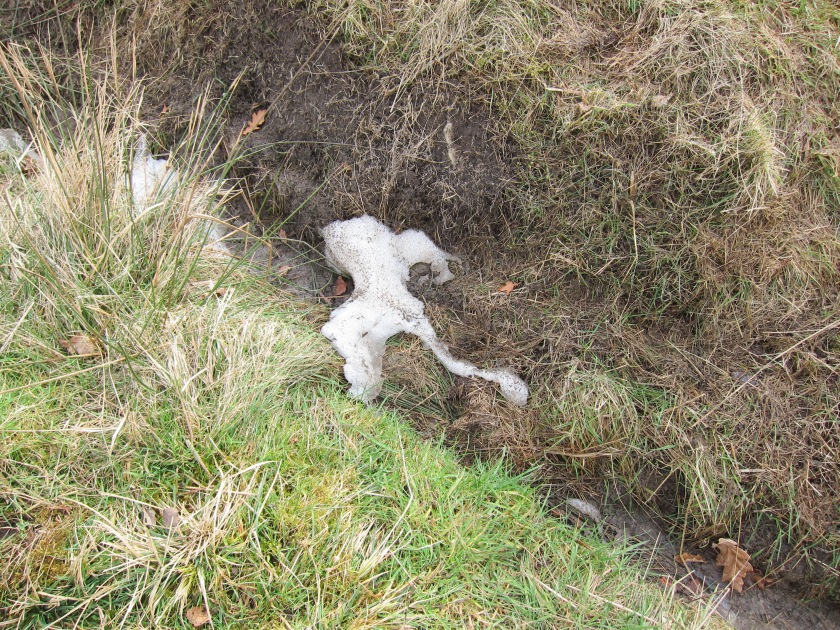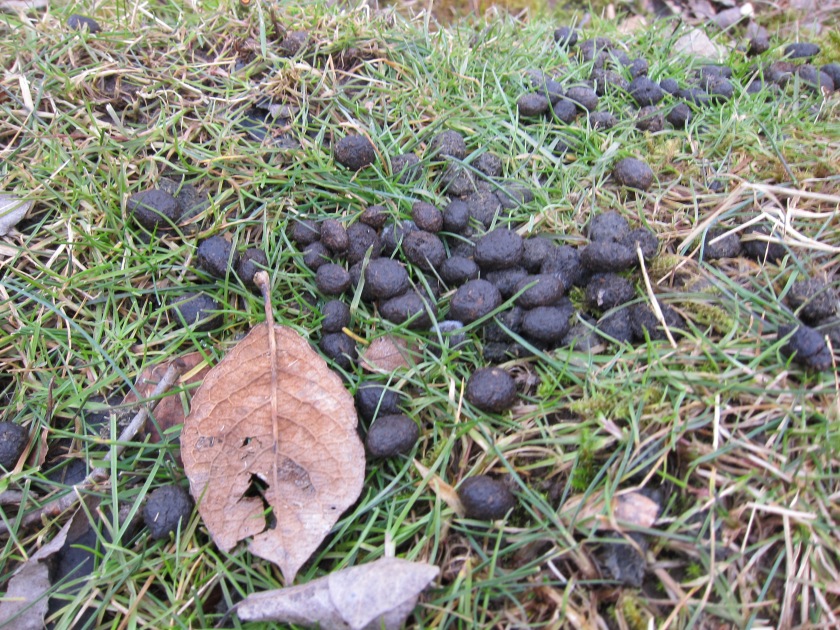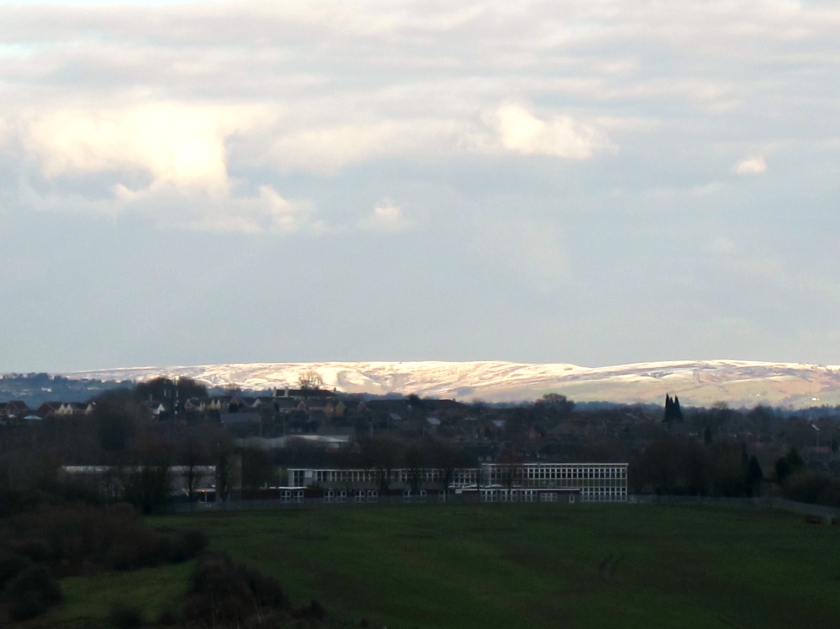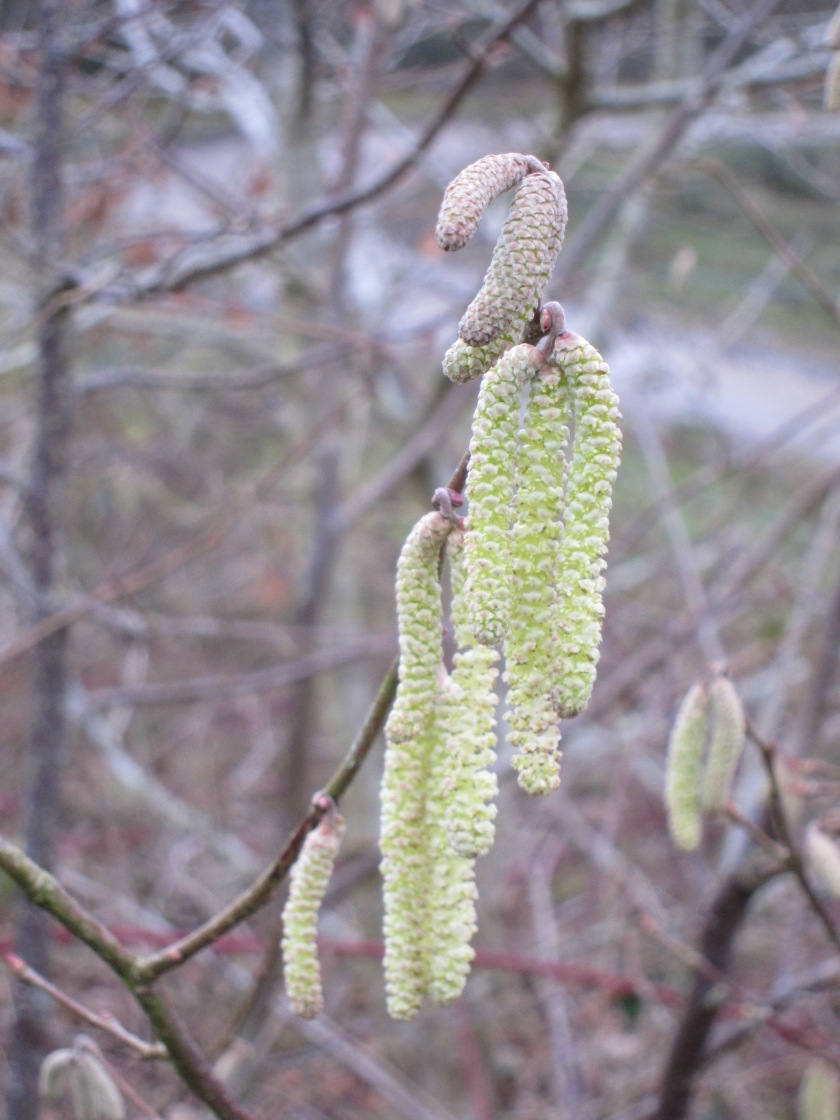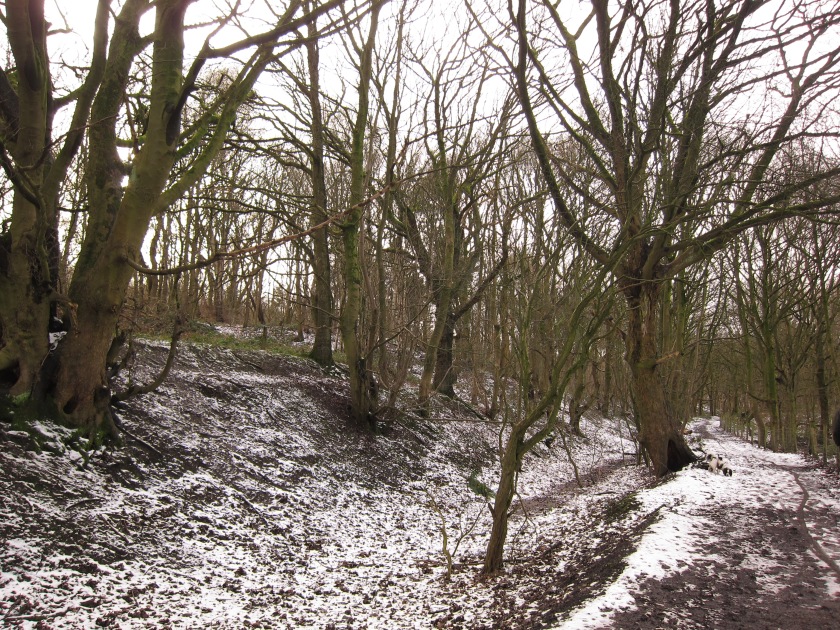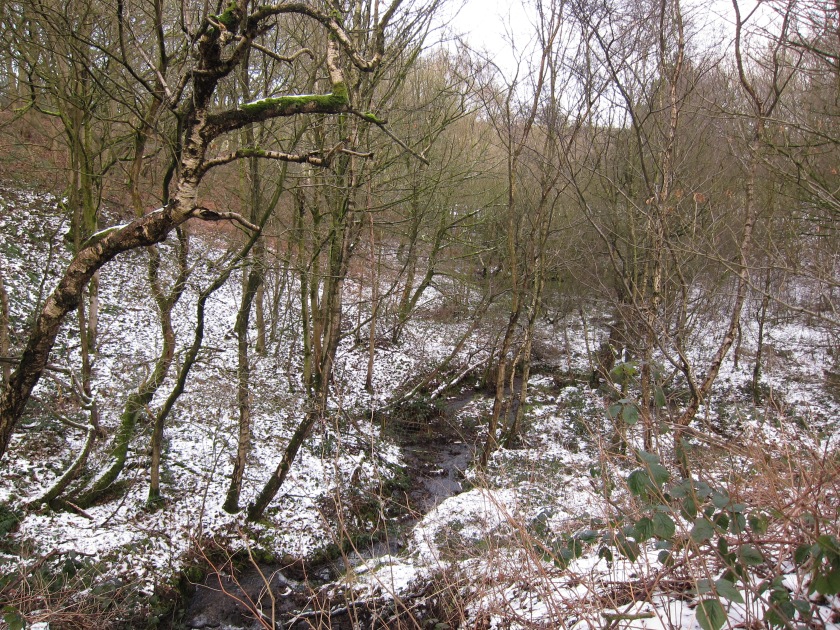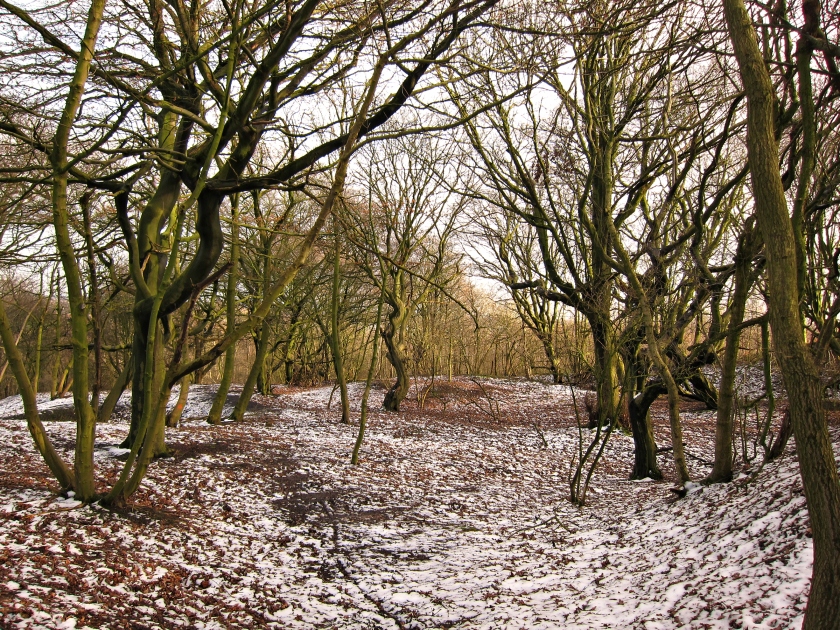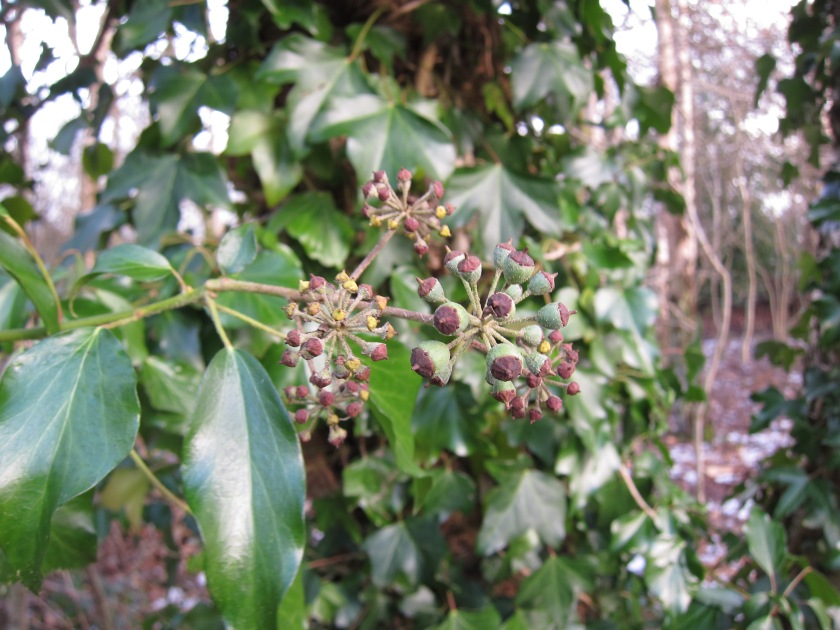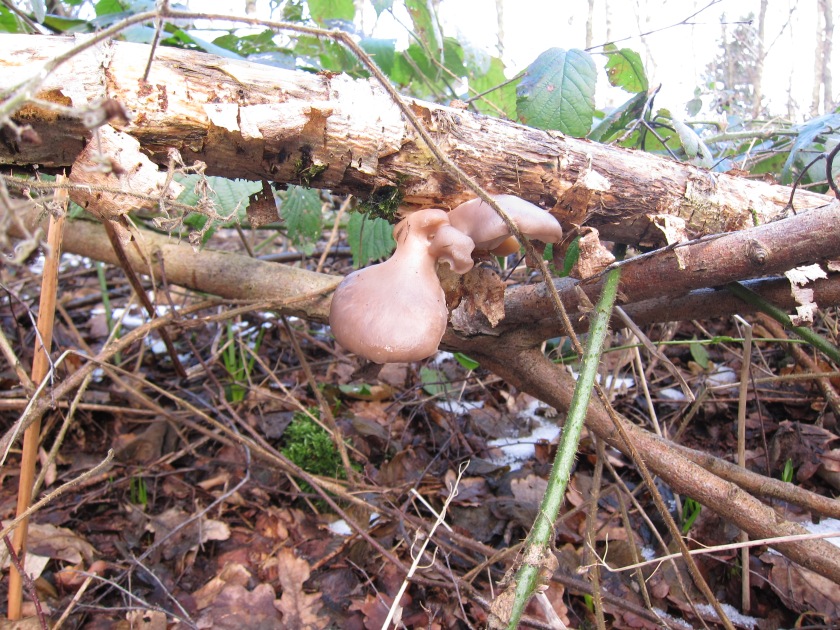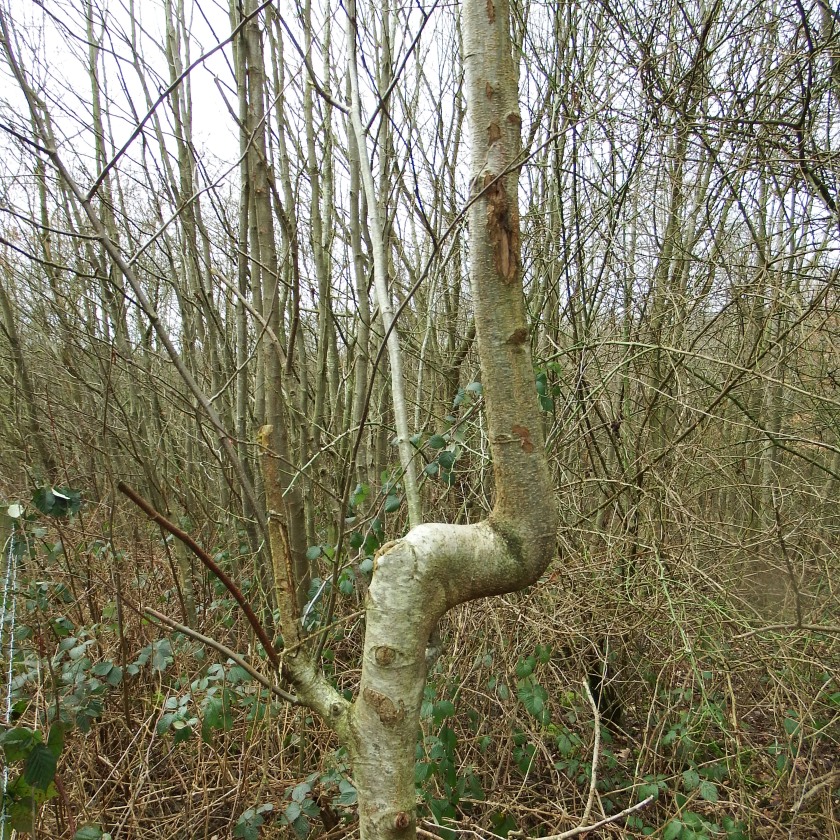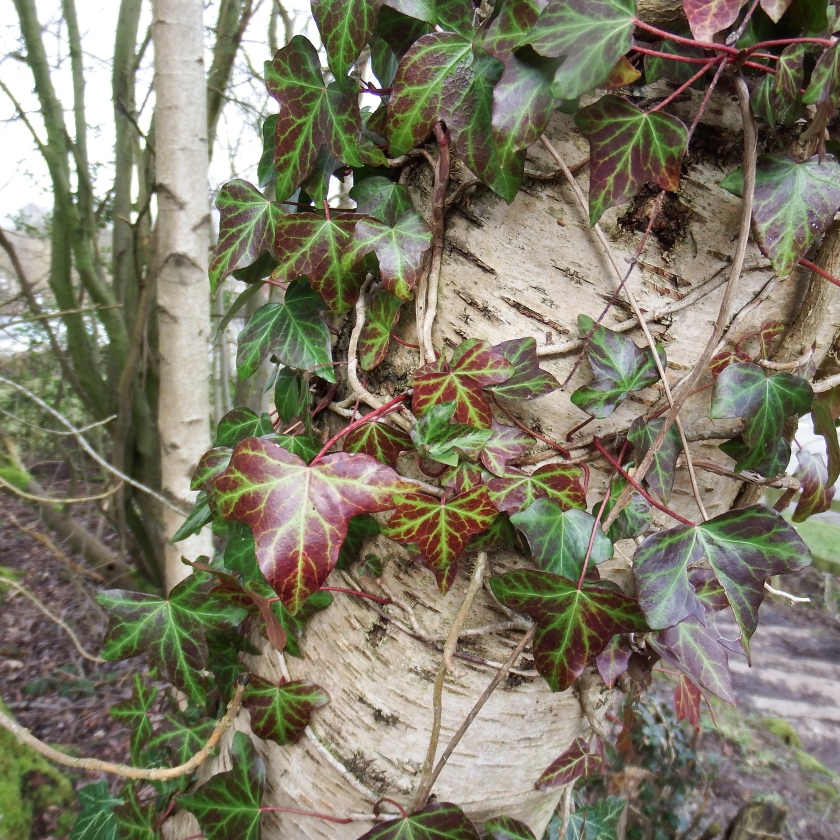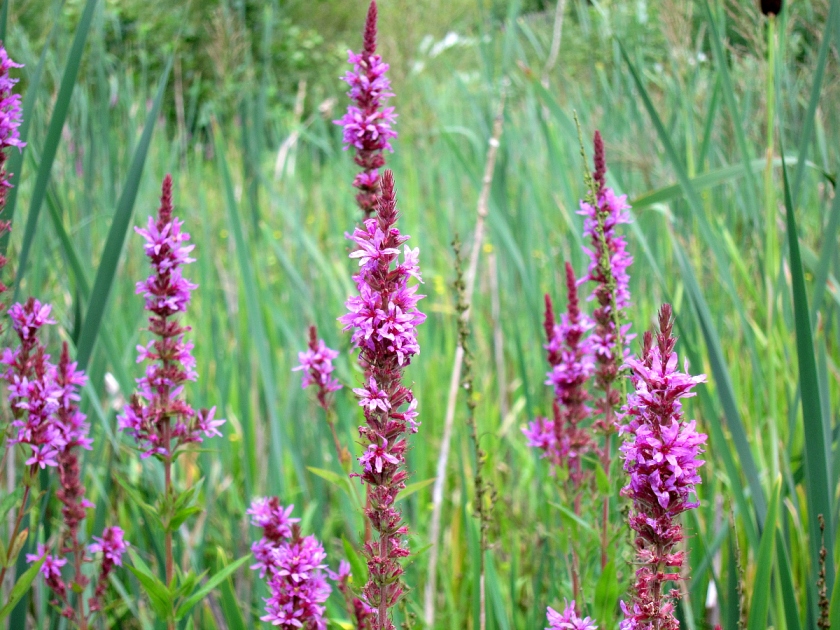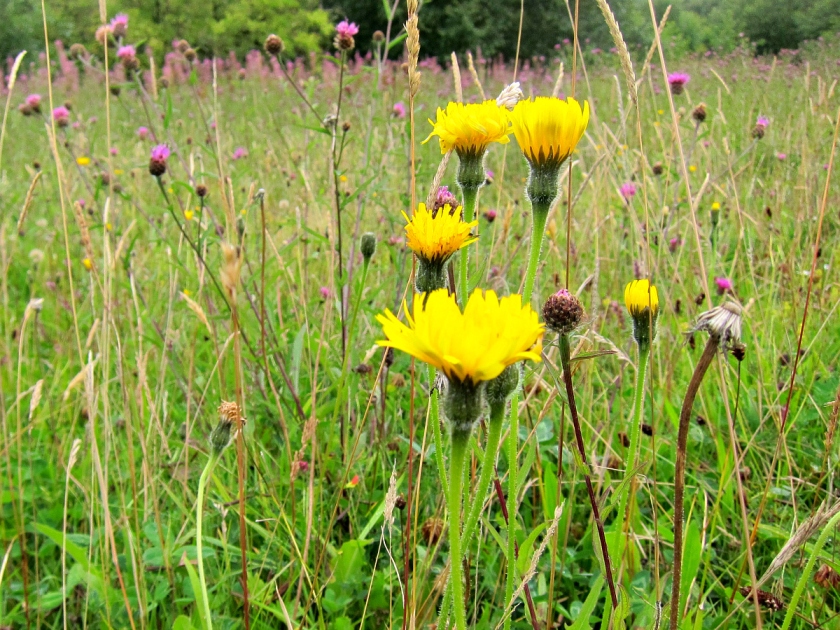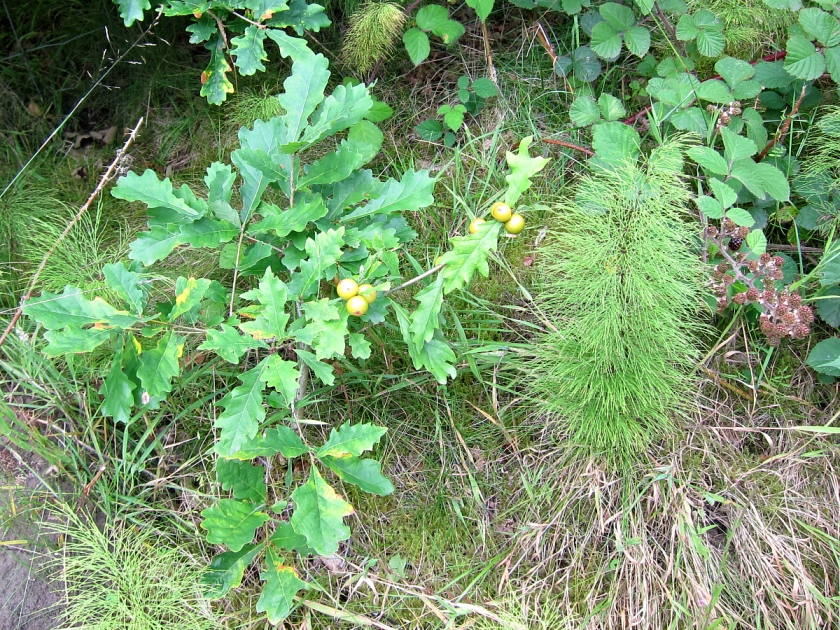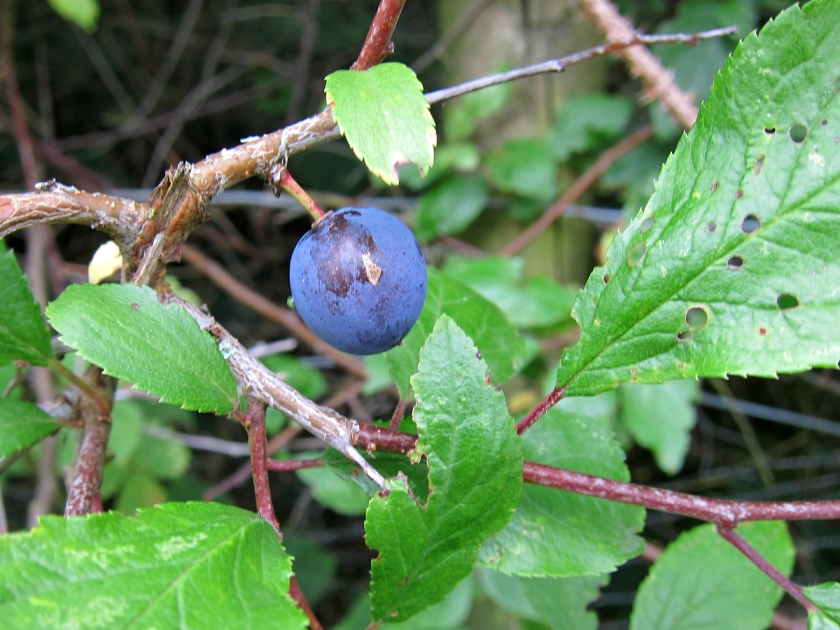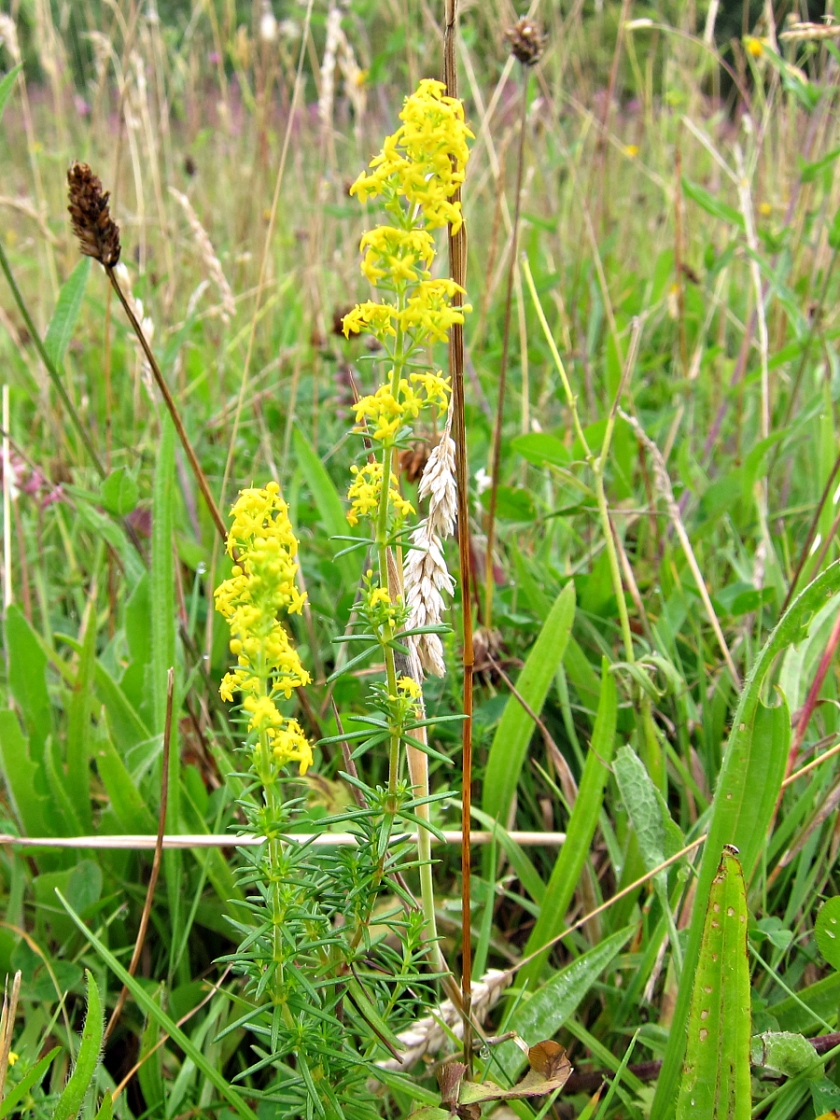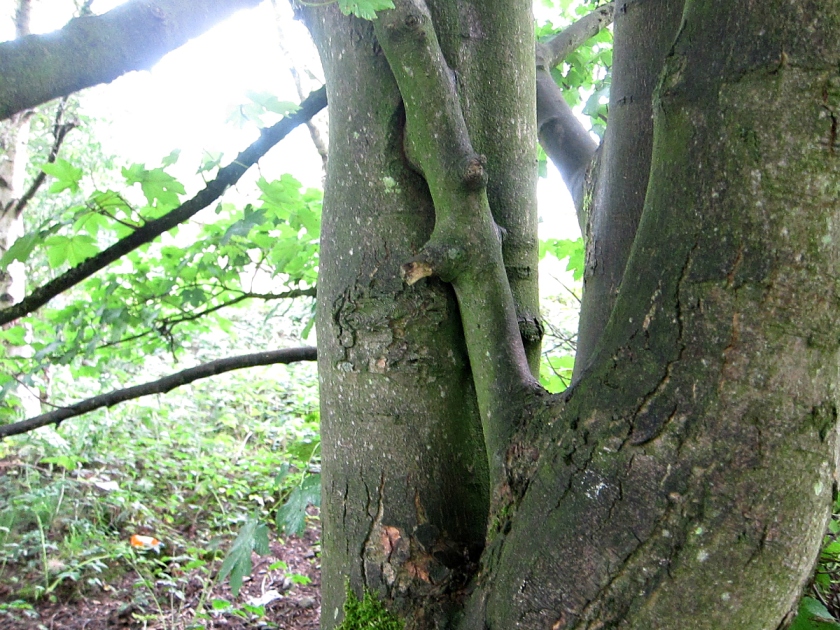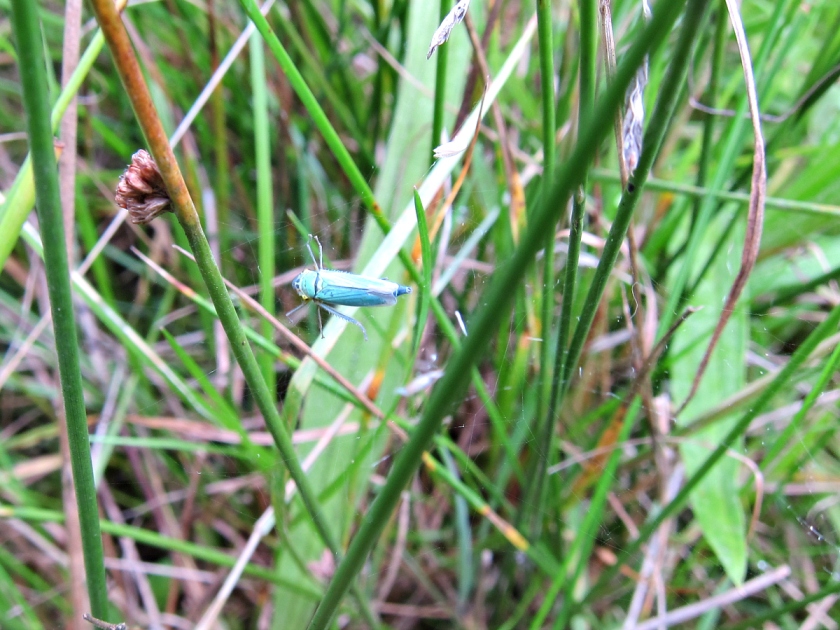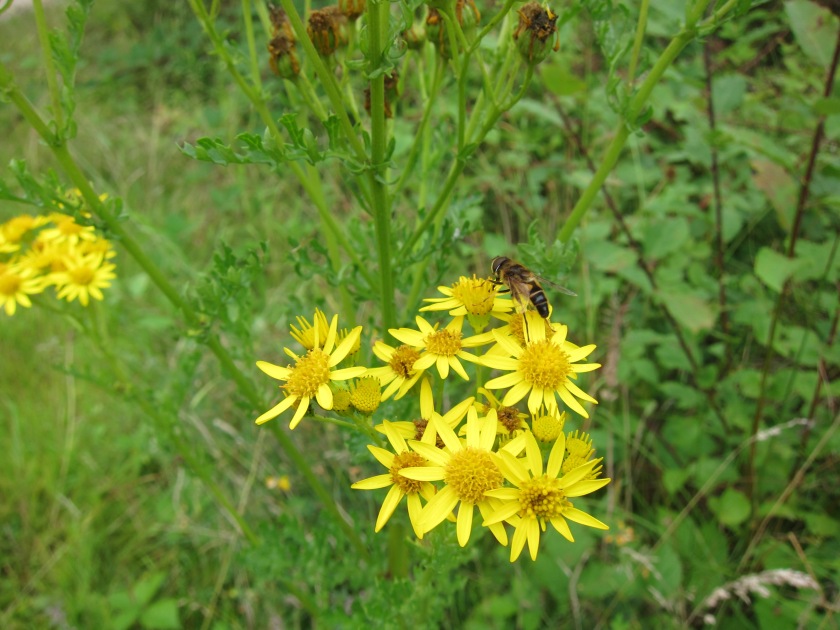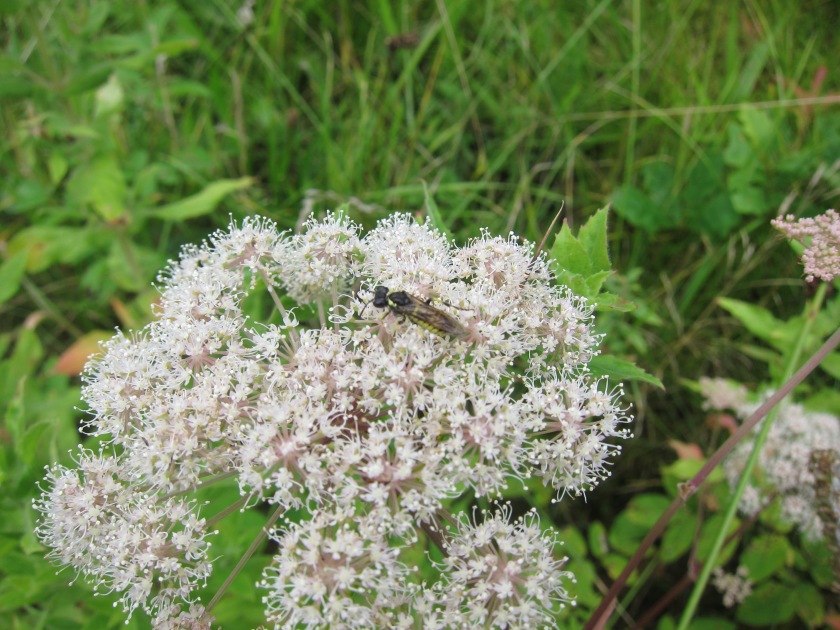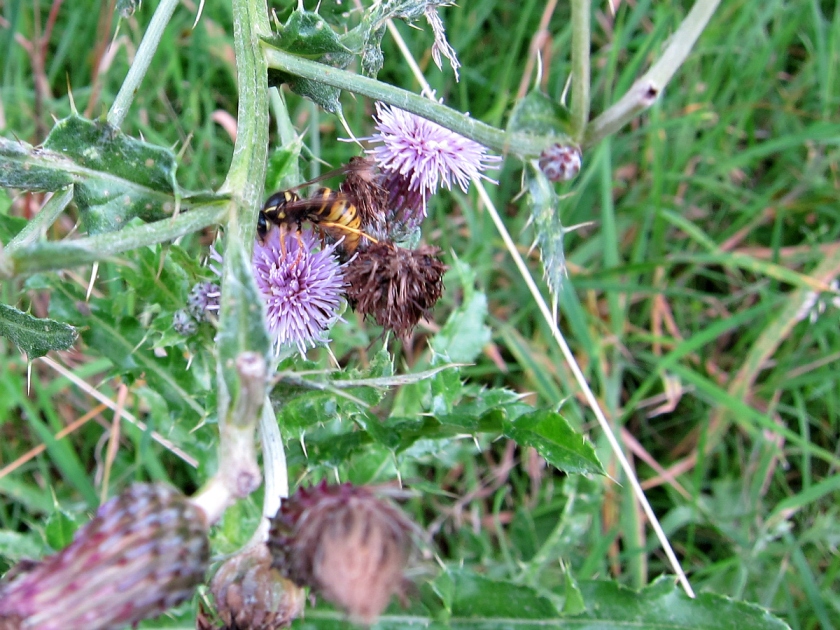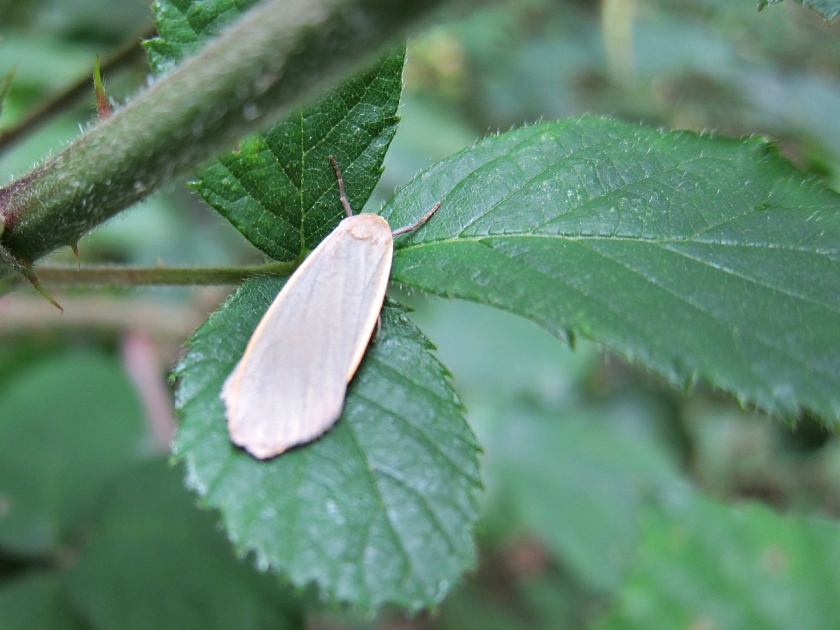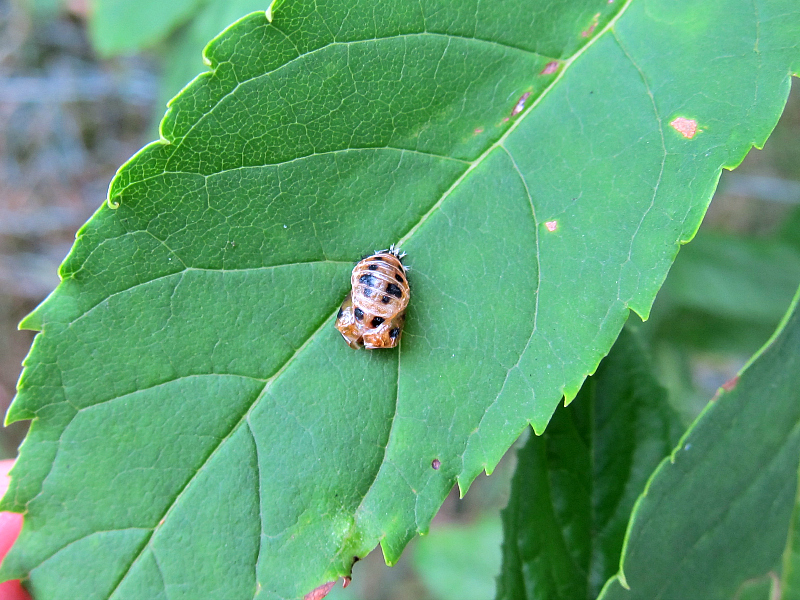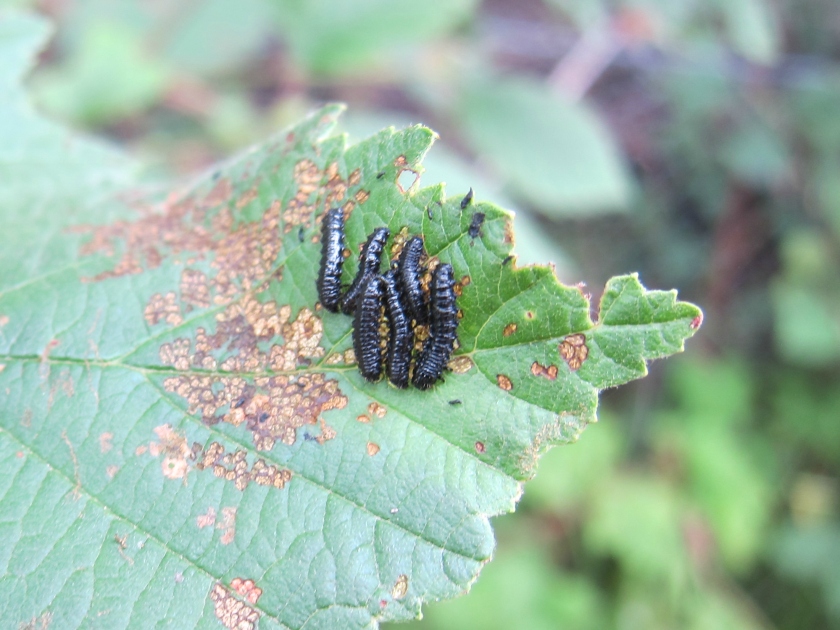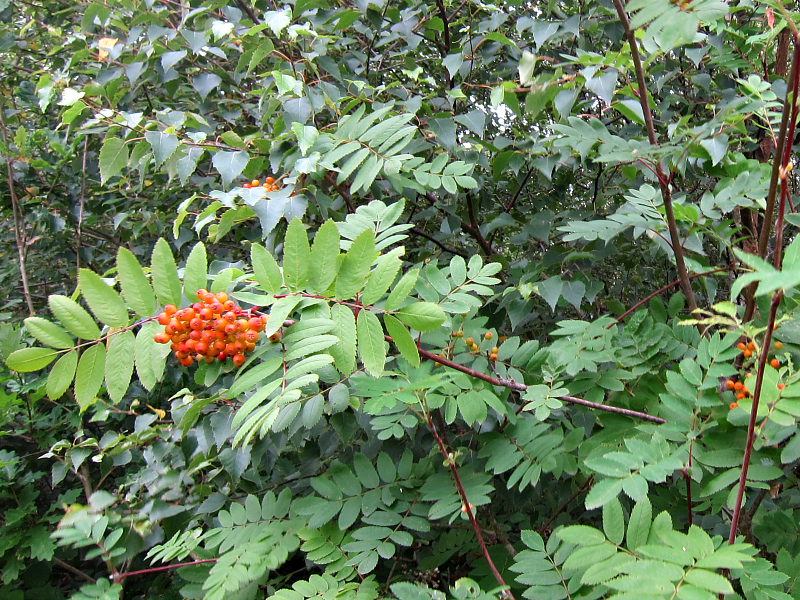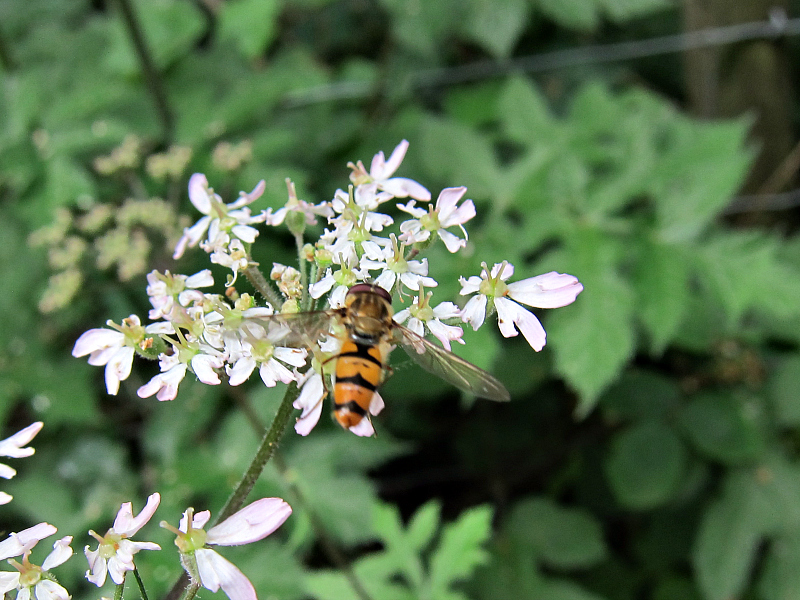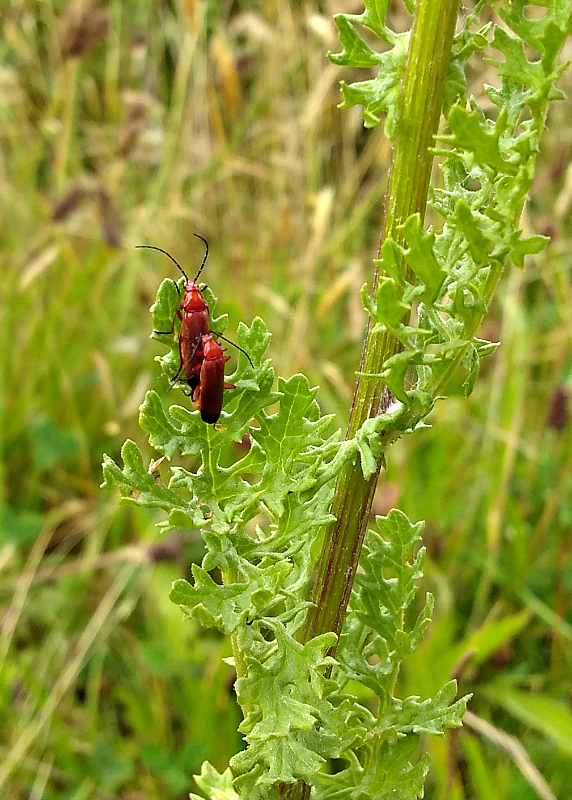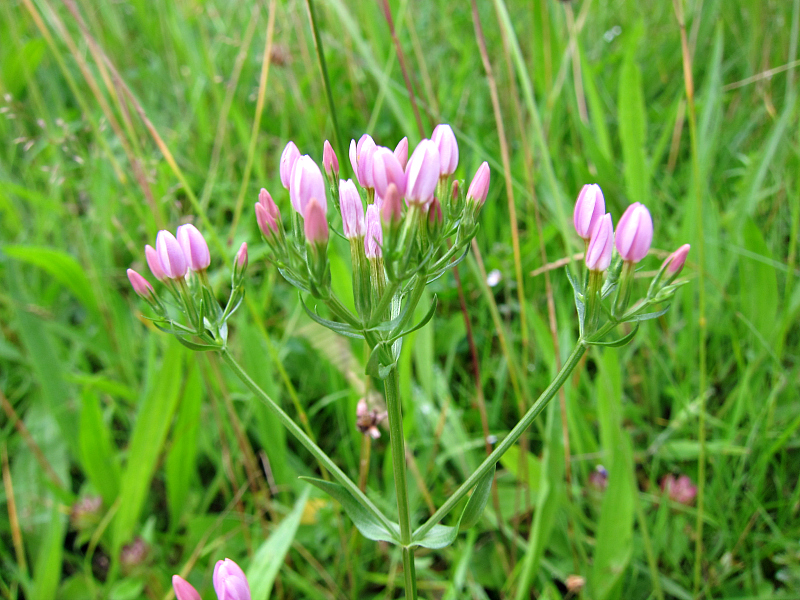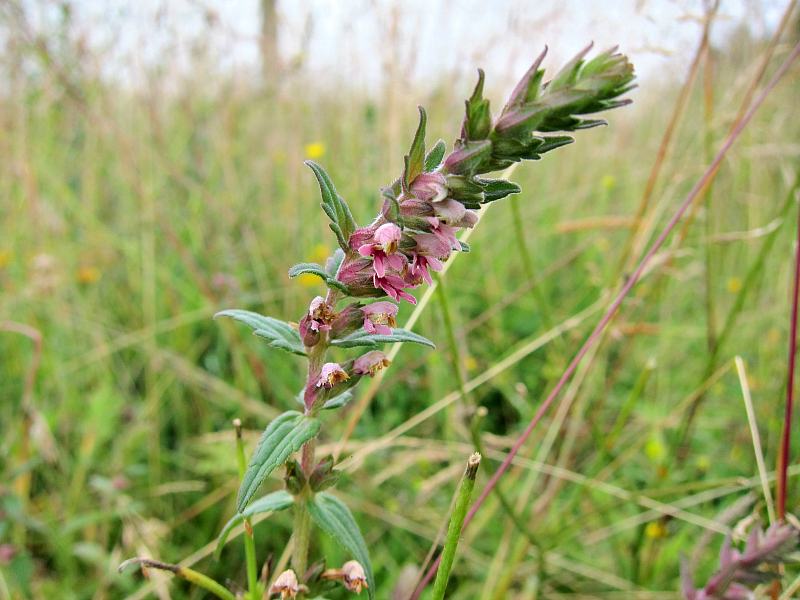We went to Apedale after breakfast in the morning today. It was quite cold and misty when we first got there, but then it became sunnier than ever!

There was a heavy dew on the ground today, which meant we saw lots of slugs and beautiful on the foliage:

These are some alder leaf beetles mating. This little alder tree was covered in alder leaf beetles:

They were once on the way to extinction in the UK, until they were discovered on trees in Manchester in 2004. They are now very common at Apedale.
This is a frog in the pond where we usually see newts, he was half-buried in the mud at the bottom of the pond, which clouded the visibility. We’ve put a circle round it to help you see it:

There were lots of large red damselflies (Pyrrhosoma nymphula). The yellow stripes on the thorax mean that this damselfly is an immature specimen.

As they get older, the yellow stripes on the thorax will turn red.
This is a footballer hoverfly (Helophilus pendulus), so-called because of the stripy thorax that resembles a footballer’s shirt.

This is a green orb weaver spider, sometimes called the cucumber green spider. Its Latin name is Araniella cucurbitina. It looks as if the spider is weaving a web inside this hawthorn leaf.

Mum spotted that the oak leaves on this sapling were full on holes, so she went for a closer look, and saw it crawling with caterpillars like this one:

We think that they might be Tortrix moth caterpillars (Leaf Roller Caterpillars) but we aren’t quite sure yet.
This beetle is a new one to us, one of the click beetle family (Elateridae) but we have absolutely no idea which type it is, because they all look very similar.

Another new insect to us was this very shiny moth, perched on a bramble leaf:


Did you know that the antennae are at least twice as long as their body? Not surprisingly, it is sometimes called the green long-horn moth. Its Latin name is Adela reaumerella.
Our last spot today was this scorpion fly (Panorpa germanica). This is a male of the species, identified by the bulbous orange genitalia at the end of its abdomen.

And also, the goat willow was spreading its seeds:

The rowan trees were in flower:

And the bluebells are still looking beautiful:













































 The
The 
























